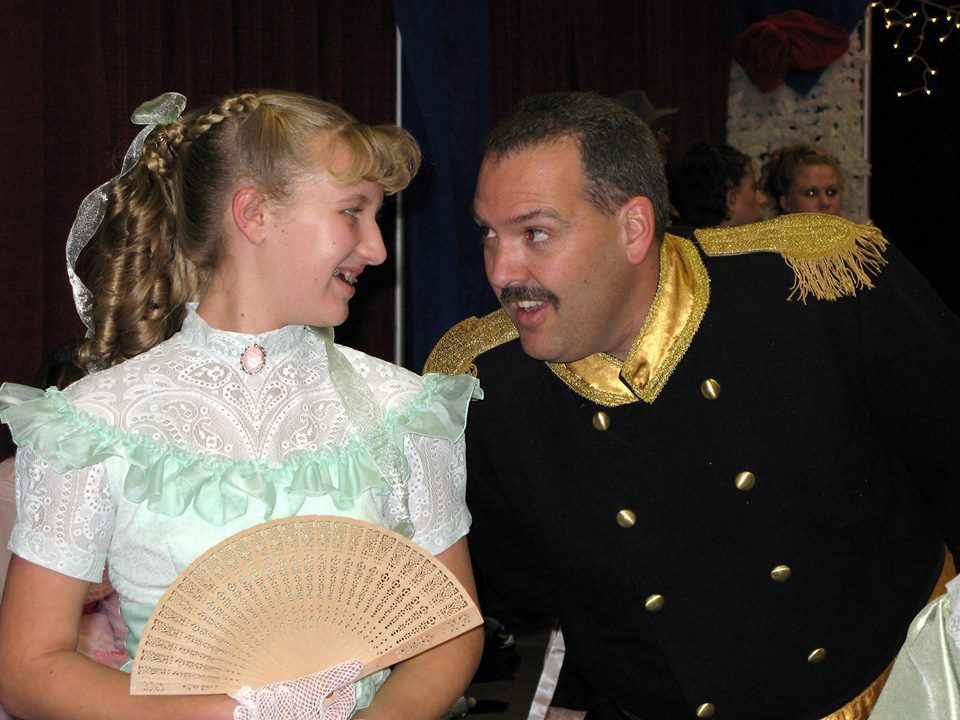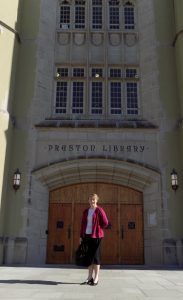Hoopskirts, Hard Work, & Dreams: Reflections on a Woman’s Past & Future
 The woman walked through the children’s section of the library, her stiff layered petticoats rustling. Her blue calico dress brushed the tops of her boots or hung unevenly toward the ground. Her apron and knitted wrap added layered warmth without restricting her movements. She was ready. Ready to teach, help, make a difference.
The woman walked through the children’s section of the library, her stiff layered petticoats rustling. Her blue calico dress brushed the tops of her boots or hung unevenly toward the ground. Her apron and knitted wrap added layered warmth without restricting her movements. She was ready. Ready to teach, help, make a difference.
Behind her, a little voice called out, “Look, Mama! It’s a princess…”
The woman smiled to herself as the words reminded her of a journey.
I first learned about the American Civil War when I was eight, and that was the beginning of a journey to become an author and a historian. As a kid, I was a reader and dreamer. I fell in love with the Civil War era because of the beautiful dresses I saw illustrated in books. My love of pretty dresses led to my own girlish costumes.
Costumes led to playing Civil War, an activity strongly influenced by my older cousin. He stood about a foot taller than me and had an absorbing passion for all things military at that time. With Gods and Generals recently hitting the theaters, he had made heroes out of Lee, Jackson, Stuart, and Chamberlain. (I didn’t get to see that movie until I was fourteen, much to my childish frustration and annoyance. Watching G&G and Gettysburg was basically a rite of passage in my teenage years.)

Hearing stories of those military guys and looking at way too many Kunstler painting books fueled my interest in a new direction. I was a sheltered, somewhat lonely kid just turning double digits in age, but I fell for the legends (written and visual) of Army of Northern Virginia leaders. It wasn’t enough so I started reading – with the goal to read every book about the Civil War in the children’s section of our two local libraries. I came pretty close and I started making my own ideas. Many misguided.
Through my middle school and high school years, I wanted nothing more than to read, study, and write books. Story books. Historical fiction that was as close to truth as possible. I came up with “deep questions.” Did John Buford have cannons with him at Gettysburg? Why was the 20th Maine in the II Corps? (Note: it never was. Another story for another day.) Why did Stonewall really die? Who were the religious generals? Were there any Union generals who didn’t drink, smoke, or swear? (Yes!) Children’s books are generally useless for such questions, but I kept plodding away and pestering anyone I thought might know.
One thing held steady as my interests bounced around: stories about real people. That drove my fascination with Civil War commanders, common soldiers, women, and children. As a kid, one of my favorite books was Jim Murphy’s The Long Road to Gettysburg because it had journal quotes from a Union and Confederate soldier and I thought it was like seeing the battle through their eyes. In later years, I read the real journals and realized just how much (and rightfully) had been removed to make their words less shocking for young readers.

In some ways, my studies came full circle. I had started interested in beautiful dresses, inched through military stories, and then in college, returned to civilian accounts to learn about the real women who wore those beautiful dresses. My final project before graduation ended as a 70+ page project on the expected and transforming roles of women on the Confederate homefront. With a diploma on the shelf and happy parents, I finally turned to buying research books. First project: Gettysburg civilians. That study culminated in my first historical novel – Blue, Gray & Crimson: A Story of Civilian Courage at Gettysburg which has won a regional award for fiction and praise for its details and perspective on a lesser-known side of battle history.
As I have continued to look at the accounts of real men, women, and children during the Civil War era, I find that often there are contrasts and considerations. For example:
The prettiest dresses often hid the saddest, loneliest hearts.
The plain dresses sometimes had blood stained hems.
The braid or star adorned uniforms did not guarantee strong leadership or courage.
The blue and gray coats became a simple facade for a myriad of beliefs and values.

Women from the past have shaped who I am today. The quest to discover their stories and the stories of their soldiers has driven me to walk up marble steps into archives, to talk to strangers, to send a guest blog post, to present research in front of a hundred people. When I’m scared, I think about them and I remember why I have to find, write, and tell their history.
In my eight year old mind, I had my life planned out. Being a historian and working in the history field was not on my list. I intended to quickly write one book and settle down to have a family. Now, I find myself approaching an average age for a Civil War soldier with three books published and a fourth in just a couple weeks, thousands of miles traveled, hundreds of words and notes written, and hours of lectures behind me. And – God willing – it’s just a beginning. Sure, someday I hope to step back and focus on that family, but until then – it’s “ever forward.”

I’d like to think Varina Davis, Arabella Barlow, and Kate Corbin would approve of the ways I’m trying to push forward. All those women faced varying forms of controversy, loneliness, and sadness in their lives, but they stood bravely, believed in the power of feminine influence on a man’s world, and redefined moments that should have broken them to become moments of lasting effect.
American women – north and south in the 1860’s – were not princesses. They were something much stronger. They were dreamers – pushing society’s limits in the cause of abolition or medical service.
“Look, Mama! It’s a princess…” When I heard those words, I wanted to shake my head. I was heading to a living history event and looking forward to the day of hands-on educational opportunities, but felt exhausted.
The practical side of me wanted to laugh because a princess does not wear a calico work dress, at least according to the classic tales. But then I thought about Arabella Barlow and Kate Corbin Pendleton – two Civil War women whose lives and histories have strongly influenced my life. I know they wore plain dresses (it’s recorded information). I know they were tired.
And I know how I see them. The way little girls look at fairy tale princesses – that’s exactly how I see these real women. Even though I know about their faults and struggles, they still shadow my life with an ideal. Poised, strong, gracious, rising from grief, battling to save lives, falling in love, steadfast to their duties and work. They inspire me, and if I can pass a little inspiration and a lot of accurate information forward, I will be content and satisfied.
Sarah, thank you for sharing your story. I enjoy everything that you write. You have a wonderful way of putting your thoughts to paper. I always have a problem when you come out with a book. The question for me is not if I buy your book, but how many. They are so good that I like to give them out as gifts. I am looking forward to your new book, “Call out the Cadets”. Now I have a problem, how many do I buy. That book is going to be a big seller.
Thank you, Larry, for always being so kind and encouraging! I look forward to signing copies of “Call Out The Cadets” for you and hope the books will meet your expectations.
Three huzzahs for your story and all the work you have done to accumulate all that experience! You were blessed to have a cousin and parents to kindle and fan your passion. That part of your story reminded me of Tony Horowitz (author of “Confederates in the Attic”) writing about his childhood and how his grandfather introduced him to the Civil War and fueled his passions for learning more. Best of luck with your continued work, writing and doing “living history,” and with the release of your book about VMI and the war.
Thank you, Rob! I can’t wait to see where the journey heads next…